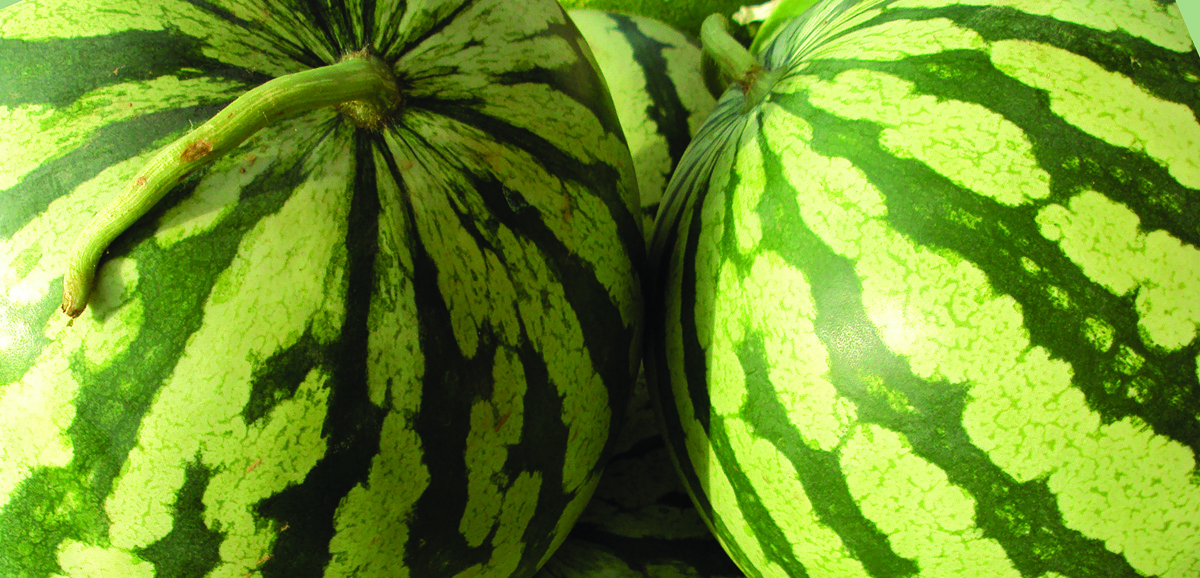Matchmaking for healthier melons
by Peter Kent
Watermelon growers around the world are learning from Clemson a new technique for plant grafting that could help produce more food with fewer chemicals. Grafting, which involves splicing the rootstock of one plant to the fruit-producing top—called the scion—of another, isn’t new. What is new is the ability to prevent rootstocks from sprouting their own shoots and leaves, the “regrowth” that takes over the plant and starves the scion. Until now, farm workers have had to scout grafted plants and pinch off the rootstock’s unruly offspring by hand.
Richard Hassell and his colleagues have found a way to save farmers the trouble. By applying a carefully calibrated formulation of a chemical used by tobacco growers to control plant suckers, the team stopped rootstock regrowth in melons and their kin, squashes and cucumbers.
“We found that we can apply it to growing tissue in the rootstock, and it will stop regrowth one hundred percent of the time,” Hassell says.
Graft without corruption
The method, which previously had not been tested with watermelons, led to a patent last year and attracted lots of attention from melon growers. Hassell has met with producers in Asia, South America, Israel, and Australia. And he’s been helping South Carolina farmers and gardeners willing to put their fingers on the line. At a workshop in Columbia last winter, trainees used razor blades to cut seedling stems then mix and match disease-resistant root bottoms with robust vegetable-growing tops.
“Grafting is more art than science,” Hassell told the group. “You have to do it carefully and consistently if you want to get results.”
Grafting has a special following among organic growers, because disease-tolerant rootstocks can replace the use of chemicals for treating disease-ridden soil. What’s more, research suggests that grafted plants respond better to environmental stresses and produce longer during the growing season than non-grafted plants.
Conventional growers in the United States, who typically raise melon crops from seed without grafting, have controlled soil-borne diseases with chemicals. But some of the chemical products they have relied on have been taken off the market. Growers have also rotated their crops and cultivated new fields to avoid infected soil, but land is scarce and costly, especially around cities.
In Korea and Japan, where land is even scarcer and chemical options even fewer, growers have depended on grafting to plant the same crops continually on the same acreage. One hundred percent of the watermelon plants grown in Korea are grafted. Asia does have plenty of people, though, and a lot of them are busy plucking regrowth from watermelon plants.
“We don’t have the labor here,” Hassell says of the United States. “And we aren’t willing to pay what it would take to do it.”
But with the new method for controlling regrowth, coupled with automated grafting equipment, grafted plants may soon be bearing fruit in melon fields here and around the world.
“Everybody wants to know how we do it,” Hassell says.
Richard L. Hassell is a vegetable specialist at the Clemson Research and Education Center in Charleston. Hassell, along with Clemson Extension vegetable specialist Gilbert Miller and University of Florida vegetable researcher Josh Freeman, demonstrated grafting methods in January at the South Carolina Watermelon Association’s annual meeting, in Columbia, South Carolina.




